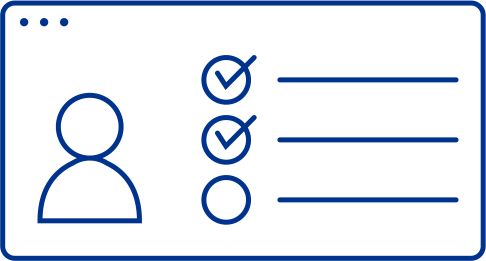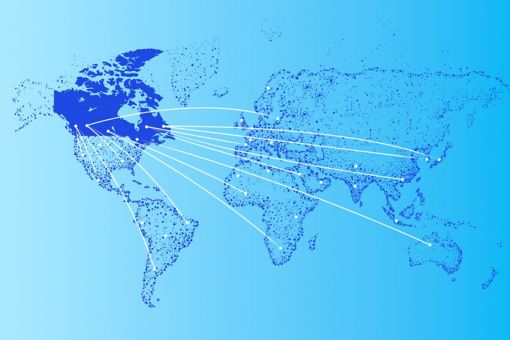
Developments in trade and tariffs
Latest tariff updates and guidance for your global trade strategy
- Home ›
- Market insights ›
- Navigating trade and tariffs ›
- Developments in trade and tariffs
The latest tariff developments
Global trade continues to shift, with businesses facing new tariffs, regulatory changes, and strategic challenges. This page provides up-to-date coverage of tariff-related news, including exemption updates, supply chain impacts, and federal policy changes—helping you stay current in a rapidly evolving environment.
On December 12, 2025, the Department of Finance announced that the temporary remission of Canadian tariffs on imports will end on January 31, 2026 for steel used for manufacturing, processing, food and beverage packaging, and agricultural production. Note that the temporary remission will continue for U.S. steel imported in Canada for the manufacturing of automobiles, auto parts, and aerospace products. Additionally, the temporary remission on aluminum products is now extended to June 30,2026.
Affected businesses should determine whether to file a company specific remission request with the Department of Finance. Specifically, affected businesses may be able to request tariff relief in “exceptional and compelling circumstances” under the guidance for the remission framework published on March 4, 2025, such as where required material cannot be sourced domestically. These remission requests can help limit cashflow issues resulting from the tariffs.
On December 10, 2025, U.S. President Donald Trump’s lead trade negotiator, Jamieson Greer, indicated that the U.S. administration is considering breaking up the current Canada-U.S.-Mexico trade agreement (CUSMA) upon its renewal in 2026 and moving towards separate trade deals instead. Mr. Greer must provide a report to U.S. Congress before January 2, 2026 (i.e., 180 days before the July 1, 2026 CUSMA renewal deadline) what position he thinks they should take and signal the administration’s intentions.
Canadian companies should prepare for the possibility of either a dramatically different CUSMA free trade agreement or a new bilateral agreement with only the U.S. by: (1) Assessing exposures and risks to their supply chain with each possibility, (2) Developing alternative supply chain strategies to minimize costs, and (3) Staying informed and engaging in the CUSMA consultation process as either a standalone company or through a trade association.
The US administration is signaling that it may withdraw from the Canada-U.S.-Mexico Agreement on trade (CUSMA) as conversations with Prime Minister Carney and President Trump are ongoing. Meanwhile, all three countries, Canada, U.S. and Mexico (USMCA/CUSMA/T-MEC) have started their public consultations ahead of the agreement review set for July 1, 2026.
New measures announced to protect Canada’s steel and lumber industries:
Prime Minister Carney announced additional measures on Nov. 26, 2025, to help transform the Canadian steel and softwood lumber industries. These measures:
1. Limit foreign steel imports to ensure Canadian steel producers have better access to the domestic market as follows:
- Reduce quotas for countries that do not have a free trade agreement (FTA) with Canada from 50% to 20% of 2024 levels.
- Reduce quotas for countries with which Canada has a FTA (excluding the U.S. and Mexico) from 100% to 75% of 2024 levels.
- Impose a global 25% tariff on imported steel-derivative products such as wind towers, prefabricated buildings, fasteners and wires.
2. Toughen border measures to combat foreign steel dumping and non-compliance by equipping the Canada Border Services Agency (CBSA) with a dedicated steel compliance team.
3. End the temporary remission of Canadian tariffs on imports of steel used in manufacturing, food and beverage packaging and agricultural production on Jan. 31, 2026. This delay is intended to give Canadian companies time to adjust and move their supply chain away from imported steel.
KPMG Trade Insight: Canadian importers who are paying surtaxes on their imports because they are faced with limited sourcing options, pre-existing contracts, and other exceptional circumstances should apply to the Department of Finance for specific surtax relief through a remission order as soon as possible. The remission application process can take more than six months.
The Government of Canada has indicated that, going forward, steel importers must provide verifiable proof of the country in which the steel was melted and poured, or they may be subject to increased tariffs. The CBSA steel compliance team will systematically monitor steel imports from both free trade partners and non-free trade countries to ensure accurate surtax collection and safeguard the Canadian steel industry. Importers lacking appropriate documentation could have their steel classified by CBSA as originating from China and face applicable surtaxes on their shipments. Acceptable forms of documentation include:
- Mill test certificates, mill test reports, material test certificates, certificates of conformance, compliance, inspection, or analysis
- Certified inspection reports
- Metallurgical test reports, or
- Chemical analysis certificates.
On November 21, 2025, Prime Minister Carney and the President of the UAE, His Highness Sheikh Mohamed bin Zayed Al Nahyan, announced that Canada and the UAE began negotiations on a Comprehensive Economic Partnership Agreement (CEPA). The CEPA will cut tariffs, eliminate red tape, and expand market access for Canadian exporters of goods and services. This partnership with the UAE expands opportunity for Canadian sectors such as engineering, aerospace, agri-food and seafood, while also facilitating greater collaboration in the digital sectors. Canada has already signed similar agreements with the Republic of Korea and Chile. This new trade agreement with the UAE has the potential to double Canada-UAE trade from $3.4 billion to $7 billion in the next decade.
On November 14, 2025, U.S. President Donald Trump signed an Executive Order to remove reciprocal tariffs on certain agricultural products effective on imports to the U.S. starting on November 13, 2025. The rationale for the tariff reduction was due to current domestic capacity constraints versus demand, and negotiations with various trading partners around the world. There is a lengthy list of goods that no longer attract reciprocal tariffs, including tomatoes, certain beef products, various nuts, bananas, pineapples, avocados, oranges, orange juice, coffee, fertilizers and hundreds of other items. Regular tariffs, if any, would still apply. Meanwhile to further address U.S. capacity constraints and bring down U.S. domestic food prices, President Donald Trump signed an executive order on November 20th which removed a 40 per cent tariff on certain agricultural products imported into the U.S. from Brazil. These agricultural products include coffee, beef and fruits. This latest tariff relief against Brazilian food imports is retroactive to November 13, 2025.
The U.S. also seems to have undertaken a potential policy change with respect to U.S. tariffs on steel and aluminum. A proclamation (Section 13) published on October 17, 2025, addressed imports of buses, medium and heavy trucks, and their parts into the U.S. This proclamation said the Secretary of Commerce was authorized to modify the steel and aluminum tariff rates to no lower than 25% if certain conditions are met. Despite this proclamation, the Secretary of Commerce has not yet moved to reduce the tariff rates on steel or aluminum, and several conditions would need to be met by U.S. importers for a reduced rate. While this is not the wide-ranging tariff relief on steel and aluminum that Canadians had been hoping for, this is the first sign that the U.S. may be willing to consider reducing tariffs on the relevant metals to help boost U.S. domestic production of automobiles or trucks. KPMG will continue to monitor these issues and will report additional insights as they emerge.
On November 18, 2025, the House of Commons won a crucial confidence vote, passing Canada’s 2025 federal budget. The fiscal plan includes measures to realize the government’s goal of doubling exports to non-U.S. markets in the next 10 years. This approach includes a strategy to diversify trade from the U.S. with the creation of a Strategic Exports Office at Global Affairs Canada which aims to centralize government support and simplify processes for exporters. The government also announced $5 billion over seven years for a Trade Diversification Corridors Fund that will invest in ports, railways, digital and transportation infrastructure. Explore our Federal Budget 2025 hub for an analysis of newly announced measures.
- On November 4, 2025, Prime Minister Mark Carney’s government tabled its first federal budget. From a trade perspective, this budget focused on trade diversification and trade growth, including developing and opening new markets to reduce Canada’s dependence on the U.S. market. The budget introduced a new strategic export office, and enhanced existing programs to increase Canada’s competitiveness. Canada’s trade strategy now includes a mix of infrastructure investments and investments in programs to help Canadian companies increase access to global markets. The budget notes that export diversification is key. The goal is to double exports to non-U.S. export markets in the next 10 years.
- On November 3, 2025, Industry Minister Melanie Joly announced the federal government officially commenced a 30-day formal dispute resolution process against an auto company for moving planned vehicle production out of Canada. The objective for initiating the process is aimed at recovering Canadian taxpayer money and returning production to the Canadian facility.
- On November 3, 2025, Canada and Pakistan announced they agreed to facilitate the export of Canadian canola to Pakistan. This agreement aligns with Canada’s objectives to open new markets for Canadian canola after China announced preliminary anti-dumping duties on Canadian canola imports in August in response to Canada’s 100% tariff on imports of Chinese electric vehicles.
- On November 1, 2025, Prime Minister Carney and Korean President Lee Jae Myung announced the new Canada-Republic of Korea Security and Defence Cooperation Partnership which will deepen cooperation on security, defence, industry, and emerging domains such as cyber, space, and hybrid threats. They also announced the conclusion of negotiations on the General Security of Information Agreement, enabling more effective collaboration on information sharing, procurement, industrial security, and research. Prime Minister Carney also announced a Team Canada Trade Mission to Korea in 2026.
- Also on November 1, 2025, Prime Minister Carney announced the initiation of free trade negotiations between Canada and Thailand, which represents a major step toward unlocking new opportunities for Canadian exporters.
- Furthermore, on November 1, 2025, Prime Minister Carney announced Canada and Chile had signed the renewed Canada-Chile Strategic Partnership Framework, strengthening cooperation in critical minerals, clean energy, wildfire management, and digital technologies.
- Finally, on November 1, 2025, Prime Minister Carney and the President of the People’s Republic of China Xi Jinping met and agreed to renew the Canada-China relationship, directing their officials to quickly resolve outstanding trade issues and discuss solutions to respective sensitivities regarding agriculture and agri-food products, such as canola, as well as seafood and electric vehicles. They also discussed pathways for deeper cooperation in clean and conventional energy, agriculture, manufacturing, climate change, and international finance.
- While at the Asia-Pacific Economic Cooperation (APEC), Prime Minister Carney met with Korean business leaders to generate investment and outline Canada’s global leadership in artificial intelligence, quantum computing, critical minerals, and clean and conventional energy. Carney underscored the opportunities that Canada’s major infrastructure projects will offer to investors, emphasising the federal government’s actions to fast-track these projects and create greater certainty for investors.
- Meanwhile, on November 1, 2025, the White House announced that President Trump and President Xi Jinping had reached a trade and economic agreement. According to the White House fact sheet, China agreed to:
- Halt the flow of fentanyl precursors to the United States
- Suspend and eliminate export controls on rare earth elements and other critical minerals
- End retaliation against U.S. semiconductor manufacturers
- Open its market to U.S. soybeans and other agricultural exports
- Suspend all retaliatory tariffs and non-tariff measures imposed since March 4, 2025
- Commit to large-scale purchases of U.S. soybeans through 2028.
In return, the United States will:
- Reduce duties addressing the synthetic opioid supply chain from China. Initially imposed to counter the influx of synthetic opioids, the duty rate will decrease from 20% to 10% effective November 10, 2025, following China's commitment to curb the flow of fentanyl to the United States.
- Extend the suspension of heightened reciprocal tariffs until November 10, 2026
- Extend certain Section 301 tariff exclusions currently due to expire on November 29, 2025 until November 10, 2026
- Suspend for one year the implementation of new end-user controls and responsive actions under the Section 301 investigation into China’s maritime and shipbuilding sectors.
- President Trump also signed other agreements, including Reciprocal Trade agreements with Malaysia and Cambodia, and joint frameworks for trade negotiations with Thailand and Vietnam. President Trump also signed critical minerals cooperation agreements with Thailand and Malaysia. In Japan, President Trump announced major projects advancing Japan’s previous $550 billion investment commitment to the United States to further revitalize the U.S. industrial base, signed a landmark critical minerals agreement with Japan, secured historic purchases of U.S. energy from Japan, and deepened U.S.-Japan cooperation to combat illegal drug trafficking. Finally, in the Republic of Korea, the President secured billions in landmark commitments, including investments to support American jobs, further America’s energy dominance, promote American leadership in the technology revolution, and build the U.S.-Korea maritime partnership.
President Trump announced in a social media post on October 23, 2025 that the U.S. is ending trade talks with Canada for the second time in recent months.
Canada also announced the reduction of annual remission quotas of two auto companies. As stated in a Department of Finance news release, Canada is reducing one’s annual remission quota by 24.2 per cent, and […] reducing another’s annual remission quota by 50 per cent”. These remission quota reductions are in reaction to the two companies’ recent announcements that they are scaling back their manufacturing presence in Canada.
On October 17, 2025, the Canadian government extended, for an additional two months, the current exemption for U.S. goods used in manufacturing, processing, or food and beverage packaging and goods used in agricultural production. The temporary exemption from tariffs on goods imported from the U.S. that are used to support various public organizations has also been extended for an additional two months. For more information, please refer to our KPMG TaxNewsFlash article from April 15, 2025, Tariffs — Canadian businesses may qualify for new relief.
Additional details regarding relief of surtaxes on specific types of steel melted and poured in China that are not produced in Canada are expected to be released on November 5, 2025, and will apply retroactively back to October 15, 2025. No further information is available currently.
Prime Minister Carney stated that Canada will not impose counter tariffs on the U.S. while intensive trade negotiations continue, and Trade Minister Dominic LeBlanc confirmed no deal has been reached but talks remain ongoing.
Also on October 17, 2025, President Donald Trump signed an executive order imposing a 25 per cent tariff on imported medium- and heavy-duty trucks under Section 232 of the Trade Expansion Act, effective November 1, with an exemption for vehicles traded under the Canada-U.S.-Mexico Agreement.
Meanwhile, a new trend has emerged with the U.S. government investing in two Canadian critical mineral companies. On October 16, 2025, the Trump administration announced it was developing a critical minerals strategy, which includes taking equity stakes in two Canadian critical-minerals companies based in Vancouver. The investment in the two companies secured highly favourable terms in both transactions, with millions in virtually free warrants issued, and a board seat in the case of one of the companies.
On October 16, 2025, the federal government announced it would roll out its $700-million loan guarantees to support Canada’s softwood lumber industry. The government announced the Business Development Bank of Canada (BDC) is now welcoming applications from companies to help mitigate challenges presented by the U.S. import taxes on lumber. According to the government, each ownership group will qualify for up to $20-million in loan-guarantee assistance, notably through accessing financing and letters of credit. The BDC’s goal is to assist small and medium-sized forestry operations by backstopping financial terms with existing lenders.
On October 7, 2025, Prime Minister Carney met with President Donald Trump in Washington, D.C. to discuss the new economic and security relationship between Canada and the U.S. The meeting did not result in any announcements impacting trade between Canada and the United States.
On September 30, 2025, U.S. President Donald Trump announced new tariffs of 10% on imported timber and lumber, and 25% on kitchen cabinets, bathroom vanities, and certain upholstered furniture. These duties are set to begin on October 14, 2025, with the relevant upholstered furniture rate to be increased to 30%, and the tariff rate on kitchen cabinets to be increased to 50%, effective January 1, 2026. Note that the UK, the EU and Japan will pay different tariff rates on these specific products based on the trade deals each of the countries has struck with the United States. This move is part of a broader U.S. tariff strategy affecting additional sectors such as patented pharmaceuticals and heavy truck imports, justified under Section 232 of the Trade Expansion Act of 1962. The United States has imposed these tariffs based on its argument that these imports threaten U.S. national security.
On September 29, 2025, the Canadian federal government announced $400 million in financial support for Algoma Steel through its large enterprise tariff relief scheme, with an additional $100 million from the Ontario government, aiming to help Algoma Steel continue operations, transition to a business model less reliant on the United States, and minimize workforce disruption. This loan, part of a broader $10-billion facility launched in March 2025, is designed to help large companies manage the impact of U.S. tariffs and complements other measures supporting the Canadian steel industry, with officials emphasizing the importance of protecting jobs and maintaining competitiveness in the face of global uncertainty.
On September 19th, 2025 Canada-U.S. Trade Minister Dominic LeBlanc officially kicked off public consultations ahead of the joint review of the Canada-U.S.-Mexico Agreement (CUSMA) in 2026. The government posted a public notice seeking comments and feedback from provinces and territories, Canadian industry, unions and workers, Indigenous communities and other stakeholders until November 3rd, as it gears up to negotiate formally with the U.S. and Mexico by July 1, 2026. The request for public comments and feedback is in addition to sector-specific recommendations already submitted by provincial leaders and premiers. Business groups in Canada, the U.S. and Mexico are calling for a review of the CUSMA trade pact, rather than withdrawing from it. One of the key purposes of the agreement’s six-year review is to assess whether all three countries wish to renew it. While President Trump has expressed praise for the deal, he has also referred to it as “transitional” and questioned its continued relevance.
On September 18th, following a two-day trade mission to Mexico to bolster economic ties, Prime Minister Carney signed a new economic and security agreement with Mexican President Claudia Sheinbaum, which the two leaders have said will “complement” CUSMA. The new Comprehensive Strategic Partnership agreement deepens ties between Canada and Mexico and includes:
- Prioritizing the development of long-term infrastructure, including ports, rail, and energy corridors
- Creating a new bilateral security dialogue to disrupt transnational organized crime, drug trafficking, human trafficking, money laundering, and cybercrime
- Building more opportunities for trade and investment – from energy and infrastructure to critical minerals and agriculture
- Reinforcing climate and conservation co-operation to protect wildlife and freshwater systems
The Federal government announced it would deliver the federal budget on November 4th, the first budget tabled under Prime Minister Mark Carney.
September 8, 2025
On September 5, 2025 Prime Minister Mark Carney outlined a strategy to protect Canada’s "strategic sectors" impacted by tariffs and make the economy stronger and more resilient to economic shocks. The government’s strategy provides support as follows:
- Auto Industry — Pause the electric vehicle mandate for 2026 models, which had required a 20% target for vehicles to be zero-emission. An immediate 60-day review of the government’s EV mandate is underway.
- New Financing and Liquidity Relief — Support businesses by:
- Introducing a new $5 billion Strategic Response Fund for all sectors impacted by tariffs to adapt, diversify and grow, including auto, steel, lumber, aluminum and copper.
- Expanding Business Development Bank of Canada loans for small and medium-sized businesses (SMBs) to $5 million and provide flexible financing through the Large Enterprise Tariff Loan Facility.
- Buy Canada — Introduce a new procurement policy to ensure that all federal institutions buy from Canadian suppliers/use Canadian materials to maximize the economic benefits for Canadians (vs. foreign suppliers for short-term gain).
- Workforce: Introduce a new reskilling package for up to 50,000 affected workers that would make EI more flexible and extend benefits.
- Canola and Agriculture Producers: Introduce a new $370 million biofuel production incentive, along with amendments to Clean Fuel Regulations, to support canola producers, along with increased funding to the AgriMarketing Program to support market diversification.
- Regional Tariff Response Initiative: Expand support to SMBs to $1 billion over three years, with flexible terms, and increase new non-repayable contributions to eligible businesses impacted by tariffs, including agricultural and seafood. $80 million of the $1 billion will be dedicated to Atlantic Canada businesses most affected by tariffs including the seafood, manufacturing, and steel sectors.
The U.S. appeals court determined that President Donald Trump’s use of emergency legislation to impose tariffs on nearly all countries, including Canada, was illegal. The court also directed that the opinion be withheld until October 14, 2025. The Trump administration has since asked the U.S. Supreme Court to uphold U.S. global tariffs by expediting a review of the case. This decision does not affect tariffs imposed under separate legislative authority, including the Section 232 tariffs (steel/aluminum and automobile/auto parts) and Section 301 tariffs, which remain in force.
The U.S. issued an executive order exempting graphite, tungsten, uranium, gold bullion and other metals from its country-based tariffs. However, silicone products are still subject to the levies. These exemptions are part of a larger executive order, issued on September 5, 2025, which identifies more than 45 categories for zero import tariffs from “aligned partners” who were successful in negotiating framework pacts to reduce “reciprocal” tariffs and duties imposed under the Section 232 national security statute. The executive order does not apply to Canada, since Canada and the U.S. have not yet negotiated a framework deal. The exempted tariffs cover items that "cannot be grown, mined, or naturally produced in the United States" or produced in sufficient volume to meet domestic demand and also “creates new carveouts for some agricultural products, aircraft and parts, and non-patented articles for use in pharmaceuticals.” These exemptions went into effect on September 8, 2025.
August 25, 2025
On August 25th, Prime Minister Carney and the Prime Minister of Poland, Donald Tusk, announced they will enhance the Canada-Poland strategic partnership across trade, defence, and energy security – investing in key sectors, such as clean energy, including nuclear, critical minerals, defence, aviation, cybersecurity, and advanced technologies. Poland is one of the fastest-growing economies in the European Union and Canada’s largest trading partner in Central and Eastern Europe.
On August 22nd, Prime Minister Carney announced the removal of Canadian retaliatory tariffs on imports of U.S. goods covered under CUSMA, effective September 1, 2025. However, Prime Minister Carney advised that Canadian retaliatory tariffs will remain in place for imports of U.S. aluminum, steel and automobiles.
On August 22nd, President Donald Trump announced he has directed his administration to investigate imports of furniture into the United States that will lead to higher tariffs by October. President Trump said “within the next 50 days, the Investigation will be completed, and furniture coming from other countries into the United States will be tariffed at a rate yet to be determined.”
On August 15th, the U.S. Bureau of Industry and Security (BIS) of the Department of Commerce announced the addition of 407 Harmonized Tariff Schedule of the U.S. (HTSUS) codes to the list of products that are now considered as steel or aluminum derivative products under Section 232 of the Trade Expansion Act of 1962. These products are now subject to steel and aluminum tariffs based on their respective content starting August 18, 2025, while non-steel and non-aluminum components remain subject to other applicable tariffs.
August 15, 2025
On August 13, the Ontario government announced new tariff relief measures designed for businesses in sectors hit hardest by tariffs (Sec. 232 tariffs). The tariff relief measures include allocating $1 billion for emergency loan support for businesses in Ontario’s steel, aluminum, and automotive sectors. Businesses in these impacted sectors (Sec. 232 tariffs) will be eligible “only after they have exhausted all federal tariffs support programs,” and must have a minimum of 10 employees and minimum annual revenues of $2 million.
On August 12, China announced it would impose a 75.8% tariff on Canadian canola imports, effective Thursday, August 14.
On August 11, the U.S. government and the government of China agreed to suspend any further retaliatory action for a period of 90 days until November 10th, 2025. During this time, the existing 10% reciprocal tariffs and other U.S. tariff measures with respect to China will remain in effect.
On August 5, Prime Minister Carney announced measures (totaling $1.25 billion) to support Canada’s lumber industry. Mr. Carney positioned the announcement as a part of a new industrial strategy to “help Canadian industries compete in this tough environment.” In response to Canada-U.S. trade negotiations, Mr. Carney stated that currently “85% of our trade with the U.S. is tariff-free” under CUSMA. He continued that “we are in the midst of negotiating with the U.S.” and suggested that, due to CUSMA, “Canada is in the best position at this time.”
On July 31st, U.S. President Donald Trump signed an executive order3 to increase the tariff on Canadian goods (excluding goods that fall under CUSMA) to 35% effective August 1st. Sectoral goods, such as steel, aluminum and copper are not shielded by the CUSMA and attract the full tariff rates in place.
On July 31, President Donald Trump said he would not raise U.S. tariffs on Mexican goods beyond their current levels for 90 days.
July 29, 2025
As the impending trade deadline for Canada and the United States nears, negotiations remain unresolved. The Canadian government has indicated that a breakthrough may not be reached before the trade deadline, while the United States has signaled that it may impose additional tariffs on August 1 if no agreement is reached.
As a reminder, Canada continues to be subject to 50% U.S. tariffs on steel and aluminum imported into the United States since June 4, 2025. In response, the Canadian government has recently announced several measures aimed at safeguarding these important industries and their workers, including:
- Introducing a new surtax and tariff rate quotas (TRQs) for free trade agreement countries: Canada is introducing TRQs that will apply on steel imported from free trade agreement countries (except for the United States and Mexico) effective August 1, 2025. The surtax rate is set to 50%, while the TRQs is set to 100% of the 2024 levels. As such, the 50% surtax will apply to steel imports from free trade agreement countries above 100% of the 2024 levels.
- Reducing TRQs for non-free trade agreement countries: Canada is reducing the TRQs set on June 27, 2025 for steel imported from non-free trade agreement countries to 50% (from 100%) of 2024 levels. As such, the current 50% surtax will apply to steel imports from non-free trade agreement countries above 50% of the 2024 levels.
- Introducing a new 25% “Melt and Pour” surtax: Canada is introducing a new 25% surtax on imports that contain steel melted and poured in China from all countries other than the U.S.
In a letter to Prime Minister Carney dated July 10, 2025, President Trump proposes to apply a 35% tariff on imported “Canadian products” effective August 1, 2025.
The United States announced its intention to impose a new 50% tariff on imported copper effective August 1, 2025. This new tariff could have a significant impact on the Canadian copper industry, as well as on global trade dynamics.
The United States also suggested that it plans to impose a tariff of approximately 200% on pharmaceutical imports into the United States that could potentially take effect in a year.
Trade negotiations between Canada and the United States continue following Canada’s announcement on June 29, 2025 that it plans to rescind the Digital Services Tax (DST). The CRA has confirmed that companies who paid DST prior to the June 30 filing deadline must wait for Parliament to pass legislation revoking the tax before receiving refunds. In the meantime, the CRA has waived filing requirements and will not collect further payments. Canada announced the changes to the DST to resume trade negotiations with the United States, and to work toward a deal by July 21. Read more in our TaxNewsFlash.
President Trump has extended the application of the reduced reciprocal tariff rates to August 1, 2025 (from July 9, 2025). These tariff rates, which apply to many countries, are expected to change for some jurisdictions on August 1, 2025. Many countries have already been informed of their new reciprocal tariff rates, including Japan and South Korea.
President Trump is also considering an extra 10% tariff for countries that are seen as aligned with the “anti-American policies” of the “BRICS” group of countries, which includes Brazil, Russia, India, China and South Africa.
As a reminder, President Trump signed “The One Big Beautiful Bill” into law on July 4th, 2025. Read more in our TaxNewsFlash.
Canada is taking steps to protect its steel and aluminum industries with plans to “adjust counter-tariffs” on steel and aluminum products on July 21, aligning with the 30-day trade deadline agreed upon at the G7 summit. The unspecified adjusted tariff rate would be at a level “consistent” with the progress of trade negotiations. Detailed measures include:
- Limiting federal procurement policies to favour Canadian suppliers and “reliable trading partners” by June 30
- Limiting the amount of steel that enters Canada and implementing retroactive quotas that will apply to all non-free trade countries
- Adopting additional tariffs over the coming weeks to address global overcapacity and unfair trade in the steel and aluminum sectors
These steps, along with the newly established trade deadline aim to protect Canadian workers and industries from excessive global production and inequitable trade practices.
Insights and resources
Connect with us
Stay up to date with what matters to you
Gain access to personalized content based on your interests by signing up today
Connect with us
- Find office locations kpmg.findOfficeLocations
- kpmg.emailUs
- Social media @ KPMG kpmg.socialMedia








